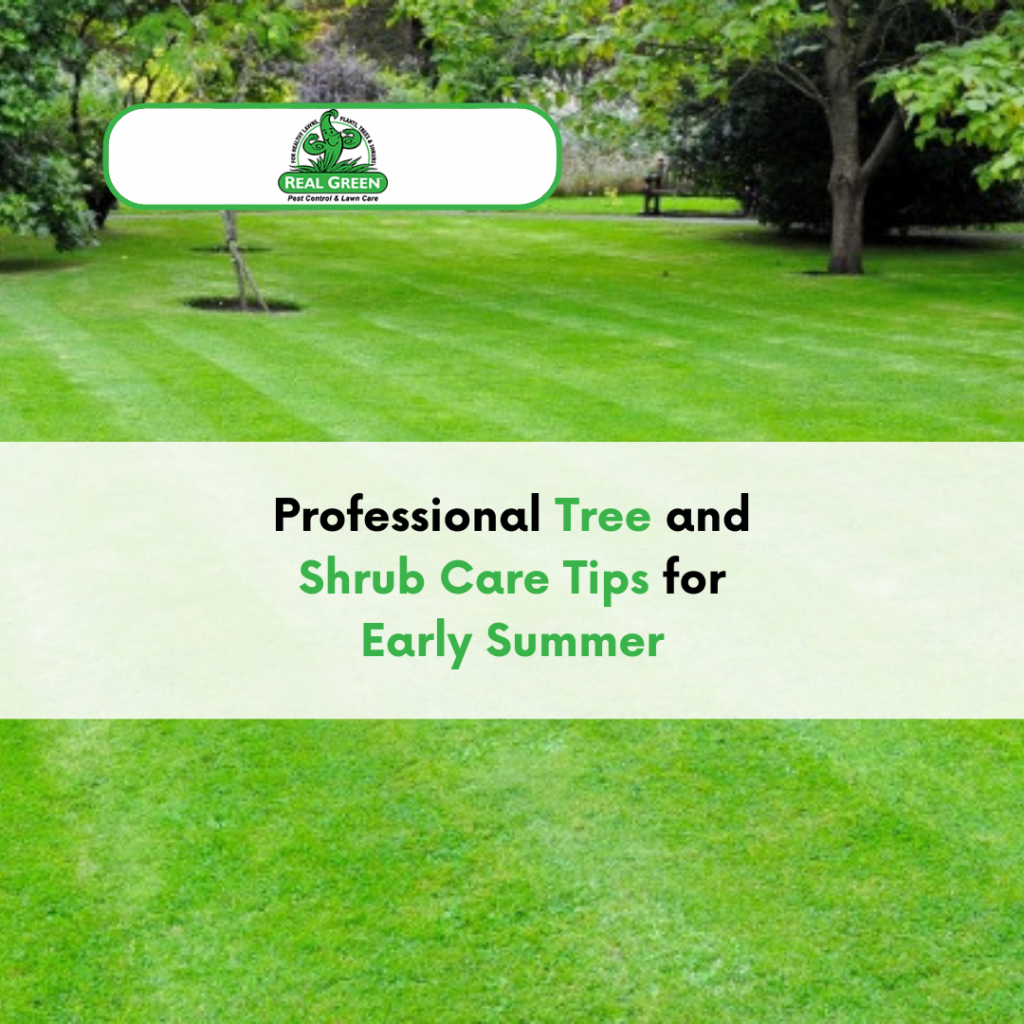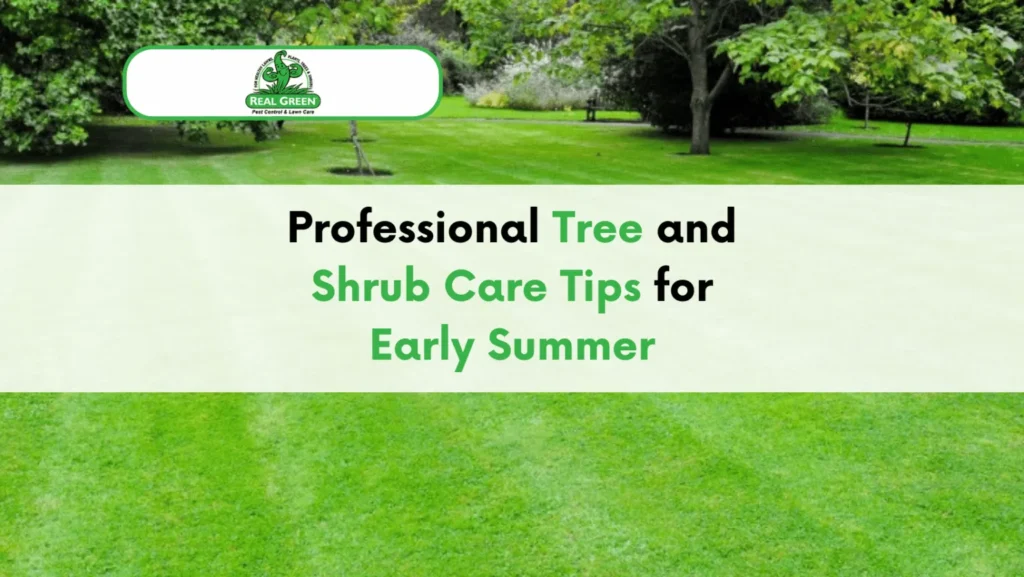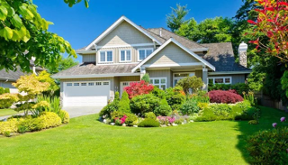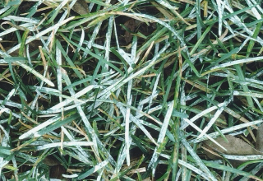
Professional Trees and Shrubs Care Tips for Early Summer

Early summer brings warmth and longer days, creating the perfect environment for your trees and shrubs to thrive. However, this season also poses unique challenges, including heat stress, pests, and the need for proper watering and fertilization. Proper care during this time is essential to ensure your plants remain healthy and vibrant throughout the season.

At Real Green Services, we specialize in providing top-notch lawn care and pest control solutions in Austin. Our experts have compiled a comprehensive guide to help you care for your trees and shrubs during early summer.
This article will cover various aspects of tree and shrub care, including inspecting for damage, managing weeds, enhancing soil quality, supporting young plants, and dealing with pests and diseases. By following these tips, you’ll be well-equipped to maintain a beautiful and healthy landscape.
Inspecting Trees and Shrubs for Damage
Inspecting your trees and shrubs early in the summer helps identify potential issues before they become severe. Regular checks can save you time and money in the long run.
Visual Inspections: Start by looking at the overall appearance of your trees and shrubs. Check the leaves for signs of discoloration, spots, or wilting. These can indicate the presence of disease or pests. Examine the bark for cracks, splits, or holes, which may suggest damage or infestation.
Physical Inspections: Don’t just rely on what you can see. Touch and feel the branches to ensure they are flexible and not brittle. Gently wiggle the trunk to check for stability. Pay close attention to the soil around the base of the plants. It should be moist but not waterlogged, indicating healthy root systems.
Performing these inspections regularly can help you catch problems early. If you notice anything unusual, consider calling a professional for a more in-depth assessment.
Managing Weeds
Weeds compete with your trees and shrubs for essential nutrients, water, and sunlight. Effectively managing weeds is crucial to maintaining healthy plants.
Mulching: Apply a layer of mulch around the base of your trees and shrubs. Mulch acts as a barrier, preventing weed seeds from germinating by blocking sunlight. It also helps retain soil moisture and regulate soil temperature.
Hand Weeding: For small areas or light weed infestations, hand weeding is effective. Make sure to remove the entire weed, including roots, to prevent regrowth. This method is eco-friendly and poses no risks to your plants.
Chemical Weed Control: Sometimes, chemical weed control is necessary for larger areas or persistent weeds. Use a pre-emergent herbicide to prevent weeds from sprouting, and a post-emergent herbicide to kill existing weeds. Follow the manufacturer’s instructions closely to avoid harming your trees and shrubs.
Enhancing Soil Quality
The quality of your soil directly impacts the health of your trees and shrubs. Improving soil quality in early summer ensures that your plants get the nutrients and support they need.
Organic Matter: Add organic matter such as compost or aged manure to improve soil structure and fertility. Organic matter helps retain moisture, encourages microbial activity, and facilitates nutrient absorption.
Soil Aeration: Compacted soil restricts root growth and reduces water infiltration. Use a garden fork to gently aerate the soil around your trees and shrubs. Aeration improves air and water movement within the soil, promoting healthier roots.
Correcting Deficiencies: Conduct a soil test to identify any nutrient deficiencies. Based on the results, add specific amendments to correct imbalances. For example, add iron sulfate to correct iron chlorosis or gypsum to improve soil structure in clay soils.
Supporting Young Trees and Shrubs
Young trees and shrubs are more vulnerable and require extra attention. Providing the proper support in early summer helps them establish themselves.
Staking: If young trees are top-heavy or exposed to strong winds, use stakes to provide support. Insert stakes about 18 inches away from the trunk and use soft ties to secure the tree. Ensure the ties are not too tight to allow for some natural movement.
Watering: Young plants have shallower roots and need more frequent watering. Water them deeply and regularly, especially during dry spells. Use a soaker hose or drip irrigation to ensure the water reaches the root zone.
Mulching and Fertilizing: Apply a layer of mulch around young plants to retain moisture and regulate soil temperature. Use a slow-release fertilizer to provide a steady supply of nutrients. Follow the recommendations for the specific species to avoid over-fertilizing.
Dealing with Pests and Diseases
Pests and diseases can quickly become problematic if not addressed early. Regular monitoring and prompt action are essential.
Common Pests: Insects such as aphids, scale, and borers can cause significant damage. Look for distorted leaves, sticky residue, or boring holes as signs of pest infestation. Use insecticides selectively, targeting the pests without harming beneficial insects.

Fungal Diseases: Warm, humid conditions can lead to fungal diseases such as powdery mildew and leaf spot. Remove affected leaves and dispose of them to prevent the spread. Apply fungicides early, following the product instructions for the best results.
Preventive Practices: Keep the area around your trees and shrubs clean by removing fallen leaves and debris. Properly space your plants to improve air circulation and reduce the risk of disease. Regularly inspect your plants and take quick action at the first sign of problems.
Fertilizing for Healthier Growth
Fertilizing your trees and shrubs in early summer gives them the nutrients they need for robust growth. Choose the right type of fertilizer and apply it correctly to avoid damaging your plants.
Choosing a Fertilizer: Select a fertilizer based on your soil test results and the specific needs of your plants. General-purpose fertilizers are suitable for most trees and shrubs, but sometimes a specialized formulation is needed.
Application Techniques: Apply fertilizer evenly around the base of your trees and shrubs. Follow the manufacturer’s instructions for the correct amount and timing. Water the area thoroughly after fertilizing to help the nutrients reach the root zone.
Timing: Early summer is a good time to fertilize because the plants are actively growing. Avoid fertilizing too late in the season, as this can encourage new growth that may not have time to harden off before winter.
Pruning for Health and Shape
Pruning in early summer helps maintain the health and shape of your trees and shrubs. Proper pruning techniques encourage growth and prevent the spread of diseases.
Timing and Tools: Early summer is an excellent time to prune because plants are actively growing, making it easier for them to heal. Use sharp, clean pruning tools to make precise cuts. This minimizes damage and reduces the risk of infection.
Removing Dead or Diseased Wood: Start by removing any dead, damaged, or diseased branches. This helps maintain the health of the plant and prevents the spread of disease. Cut back to healthy wood, making sure to avoid cutting too close to the main trunk or branch.
Shaping and Thinning: Pruning helps maintain the desired shape of your trees and shrubs. Remove any crossing or overcrowded branches to improve air circulation and light penetration. This not only makes the plant look better but also promotes healthier growth.
Avoiding Over-Pruning: Be cautious not to remove too much at once. Over-pruning can stress the plant and stunt its growth. Aim to remove no more than 10-20% of the foliage in one season.
Watering Strategies
Proper watering is crucial for the health of your trees and shrubs, especially during the hot early summer months. Understanding when and how to water will ensure your plants thrive.
Deep Watering Techniques: Trees and shrubs benefit from deep watering, which encourages deep root growth. Water slowly and deeply, allowing the soil to absorb the moisture thoroughly. This is more effective than frequent shallow watering.
Frequency of Watering: Water your plants early in the morning when the temperatures are cooler. This reduces water loss due to evaporation. The frequency of watering will depend on the type of plants and local weather conditions, but as a general rule, trees and shrubs need watering about once a week.
Signs of Under and Over-Watering: Learn to recognize the signs of both under and over-watering. Under-watered plants may have wilted leaves, dry soil, and slowed growth. Over-watered plants might show yellowing leaves, soggy soil, and root rot. Adjust your watering habits based on these signs to ensure healthy growth.
Protection Against Pests
Pests can quickly weaken trees and shrubs if left unchecked. Early summer is an ideal time to take preventive measures and address any infestations.
Common Pests and Their Damage: Common pests include aphids, spider mites, and caterpillars. These pests can cause damage by sucking sap, defoliating plants, and transmitting diseases. Monitor your plants regularly for any signs of pest activity, such as holes in leaves or a sticky residue known as honeydew.
Chemical Pest Control: Sometimes, chemical treatments are necessary to control pest infestations. Use insecticides that are specifically designed for the pests you are targeting. Follow the instructions carefully to minimize any potential harm to beneficial insects and the environment.
Integrated Pest Management (IPM): IPM combines cultural, biological, and chemical methods for long-term pest control. Encourage natural predators, such as ladybugs and birds, which feed on harmful insects. Keeping your plants healthy through proper care also makes them less susceptible to pests.
Soil Health and Mulching
Soil health is a fundamental aspect of tree and shrub care. Quality soil and effective mulching techniques can significantly improve plant vitality.
Soil Testing: Conducting a soil test is essential for understanding its pH levels and nutrient content. This helps you determine any specific amendments needed, such as adding lime to raise pH or sulfur to lower it.
Adding Organic Matter: Enhance soil quality by incorporating organic matter like compost or aged manure. This enriches the soil, improves structure, and increases its ability to retain moisture.
Benefits of Mulching: Mulching around trees and shrubs has several benefits. It helps retain soil moisture, suppresses weed growth, and regulates soil temperature. Spread a 2-4 inch layer of mulch around the base of your plants but avoid piling it against the trunk.
Nutrient Management
Providing the right nutrients at the right time is crucial for sustained growth and health.
Balanced Fertilizers: Use balanced fertilizers formulated for trees and shrubs. These typically contain the essential macronutrients nitrogen, phosphorus, and potassium. Follow application instructions carefully to avoid over-fertilization, which can harm plants.
Slow-Release Options: Slow-release fertilizers supply nutrients over an extended period, reducing the need for frequent applications. This ensures a steady supply of nutrients, supporting continuous growth throughout the season.
Addressing Specific Deficiencies: Based on your soil test results, you may need to address specific nutrient deficiencies. For example, yellowing leaves often indicate a lack of nitrogen or iron. Tailoring your fertilization approach will ensure your plants receive the nutrients they need.
Enhancing Root Health
Healthy roots are the foundation of strong trees and shrubs. Focusing on root health improves overall plant vigor.
Root Zone Care: Keep the soil around the root zone well-aerated and free from heavy compaction. Avoid piling soil or mulch directly against the trunk, which can cause rot and attract pests.
Maintaining Moisture Levels: Ensure consistent moisture in the root zone. This is especially important for young plants and those in dry climates. Avoid waterlogging, which can lead to root rot.
Root Pruning and Stimulation: For containerized trees and shrubs, root pruning can stimulate new growth. Trim away overgrown or circling roots to promote healthier development. Be careful not to remove too much of the root mass at once.
Weather and Climate Considerations
The Texas climate poses unique challenges that require specific strategies for tree and shrub care.
Heat Tolerance: Choose tree and shrub species that are well-suited to the hot Texas summers. Native plants are often more tolerant of local climate conditions and require less maintenance.
Sunscald Prevention: Young trees are particularly vulnerable to sunscald, which damages the bark. Use tree wraps or protective trunk guards to shield them from intense sunlight.
Drought Management: In periods of drought, water conservation becomes critical. Implementing efficient watering techniques and mulching can help retain soil moisture and reduce water usage.
Encouraging Flowering and Fruiting
For ornamental and fruit-bearing trees and shrubs, early summer care can enhance flowering and fruit production.
Pruning for Blooms: Pruning at the right time encourages blooming. Remove dead or weak branches to redirect the plant’s energy toward producing flowers and fruit.
Fertilizing for Flowering and Fruiting: Specific fertilizers promote blooms and fruit development. Look for formulations with higher phosphorus content, as phosphorus is crucial for flowering.
Pest Management: Pests can damage flowers and developing fruit. Regularly inspect your plants for signs of pest activity and take appropriate action to protect them and ensure a fruitful harvest.
Preparing for Summer Storms
Summer storms can cause significant damage to trees and shrubs. Preparing for potential storms helps protect your plants and minimize damage.
Strengthening Weak Branches: Inspect your trees and shrubs for any weak or overgrown branches. These are more likely to break during strong winds. Prune these branches to reduce the risk of breakage. Use proper pruning techniques to ensure healthy regrowth.
Securing Young Plants: Young trees and shrubs are particularly vulnerable to storm damage. Use stakes and ties to provide additional support. Ensure the ties are loose enough to allow for natural movement but secure enough to keep the plant stable.
Clearing Debris: Remove any dead branches, leaves, or other debris from around your plants. This reduces the risk of projectiles during a storm, which can cause further damage to your trees and shrubs. Regularly check your yard for any potential hazards.
Managing Heat Stress
Heat stress is a common issue during early summer, especially in the Texas climate. Managing heat stress is crucial to maintaining healthy plants.
Providing Shade: Offer temporary shade for vulnerable plants during the hottest parts of the day. Use shade cloth or temporary structures to protect your trees and shrubs from intense sunlight. This helps reduce heat stress and prevents sunscald.
Increasing Watering: During periods of extreme heat, increase the frequency of watering. Ensure the soil remains consistently moist but not waterlogged. Deep watering is particularly important to encourage deep root growth and help the plant withstand heat stress.
Using Mulch: Mulch helps retain soil moisture and regulate soil temperature. Apply a generous layer of mulch around the base of your trees and shrubs. Mulch also reduces the need for frequent watering by preserving soil moisture.
Monitoring for Pests and Diseases
Early summer is a critical time for pest and disease management. Regular monitoring and early intervention can prevent significant damage.
Identifying Common Symptoms: Learn to recognize the early signs of pest infestations and diseases. Look for discolored leaves, unusual growth patterns, or visible insects. Early detection allows for prompt treatment, reducing the impact on your plants.
Using Chemical Treatments: Sometimes chemical treatments are necessary to control pests and diseases effectively. Choose the appropriate pesticide or fungicide for the specific issue you are dealing with. Always follow the manufacturer’s instructions to ensure safe and effective application.
Promoting Plant Health: Healthy plants are less susceptible to pests and diseases. Ensure your trees and shrubs receive adequate water, nutrients, and care. Healthy plants can better withstand and recover from pest and disease attacks.
Nurturing Strong and Healthy Trees and Shrubs
Early summer is a crucial time for tree and shrub care, especially in the Texas climate. By focusing on proper pruning, efficient watering, pest management, soil health, and preparing for extreme weather conditions, you can ensure your plants thrive. Implementing regular maintenance schedules and adjusting care practices based on plant type and seasonal transitions will foster a robust and vibrant landscape.
Healthy trees and shrubs enhance your property’s beauty and contribute to a balanced ecosystem. With the right care, you can enjoy the many benefits that well-maintained plants provide all year round.
For expert assistance in maintaining your trees and shrubs, trust the knowledgeable team at Real Green. Our professional services are designed to meet the unique needs of your landscape, ensuring your plants remain healthy and beautiful.
Ready to give your trees and shrubs the best care possible? Contact Real Green today! Our experts are here to provide top-notch tree and shrub care services tailored to your needs. Let’s work together to create and maintain the lush, thriving outdoor space you deserve.
